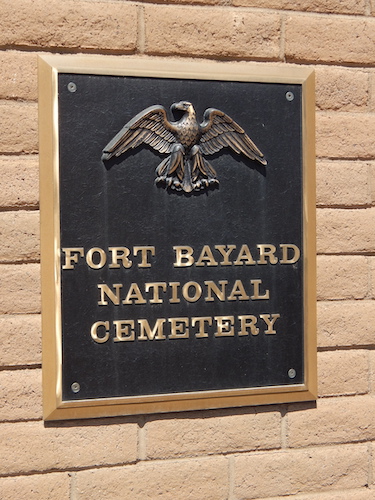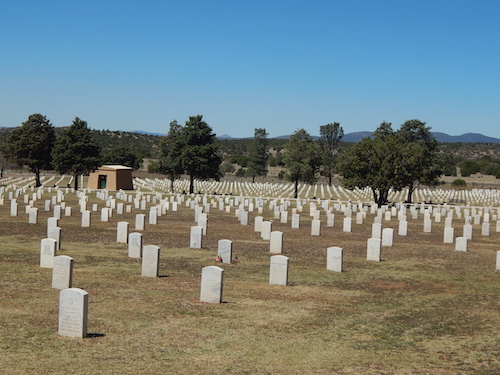


PFC Richard G. Pistor
Born – Nov. 20, 1923
Grant County, New Mexico
Died – August 28, 1942
Cabanatuan POW Camp
Philippines
Photos and article by Mike Bibb
An 18-year-old Silver City, New Mexico area teen, who enlisted in the United States Army in early 1941, finally came home – about 83 years later.
Most people today are probably unaware of the history leading up to America's entry into World War Two. Primarily, because it is no longer emphasized very much in our schools.
Events of almost a century ago are considered ancient, and barely discussed. Other than to mention a few highlights of the era – the rise of Nazi Germany in Europe, Japan's attack on Pearl Harbor, Hawaii, and the dropping of the atomic bomb.
Important, certainly, but as usual there is much more to the story.
Prior to Japan's surprise aerial assault in Hawaii on Dec. 7, 1941, which triggered the U.S. entrance into the war, the Land of the Rising Sun was already growing its influence in China, the Philippine Islands and Indonesia.
Japan, an island nation about the size of California in the far Western Pacific, required increasing amounts of raw materials and labor to sustain its expanding empire.
It began by attacking their closest neighbors, then moving outward to other targets.
However, when the Emperor and his military advisors decided to strike the U.S. Navy Fleet anchored in the territory of Hawaii, that was the beginning of their very violent end four years later. Japan, in its quest for dominance in the South East Asia region overplayed its hand.
They had, as the saying goes, "Awakened a sleeping giant."
PFC Richard G. Pitsor of Fort Bayard, New Mexico – a small community a few miles east of Silver City – was attached to G Company of the 200th Coast Artillery Regiment in the Philippines, when Japanese forces invaded in late December, 1941.
Fighting continued for several months until American and Filipino troops on the Bataan peninsula surrendered on April 9, 1942, with Corregidor Island following on May 6.
Several thousand military personnel were captured and sent to various Japanese prisoner of war camps on the islands.
Many were herded into groups and forced to walk 65 miles to a POW camp in what became known as the Bataan Death March – an 11-day ordeal in which hundreds of prisoners were physically mistreated, or shot for simply collapsing from exhaustion, sickness and disease.
In the eyes of the Japanese at the time, surrender was considerable dishonorable – even among the enemy – and not worthy of continued life. Consequently, POWs were treated with disdain, and only tolerated until they were no longer useful.
U.S. Army General Douglas MacArthur was also compelled to evacuate his post rather than risk capture. When leaving, he uttered his famous remark "I shall return."
He did, about two and a-half years later on Oct. 20, 1944. By this time, Japan was in retreat, finally officially surrendering aboard the United States Battleship Missouri in Tokyo Harbor, under the guidance of Gen. MacArthur on Sept. 2, 1945.
Private First Class Pitsor survived the Bataan Death March, but later died in the Cabanatuan Japanese prison camp on Aug. 28, 1942. He, along with an estimated 2,500 other prisoners, perished.
Conditions were so harsh, that in the beginning of their incarceration up to 20 prisoners a day were succumbing. Prisoner burial units were formed to dig the graves of their fellow service members. When deaths exceeded capacity of individual graves, large pits were hollowed-out to inter greater numbers of casualties.
Pitsor's corpse lay buried in the camp cemetery until after the end of the war. In December 1945 and early 1946, the 111th Quartermaster Registration Platoon began to disinter Cabanatuan Prison Camp #1 and #3 cemeteries. The bodies were sent to a facility outside Manila. There, the tedious process of identifying individual remains began.
Due to circumstances and difficulties encountered during the ID procedure, some POW casualties were never identified. At least, not by using contemporary procedures and technology.
As a result, it's a slow and painstaking process.
Defense POW/MIA Accounting Agency announced on March 20, 2023 that PFC Pitsor had been identified and recorded, and would be eligible to return to his home in Southwest New Mexico.
Over a year later, Pitsor was flown into the El Paso airport, April 24, 2024 at 11:44 a.m. A Patriot Guard and American Legion Riders provided a 160-mile motorcycle escort from the airport to Baca's Funeral Home in Silver City, New Mexico.
On April 26, at approximately 11:00 a.m., PFC Pitsor and his American Legion escort, entered Fort Bayard National Cemetery.
Along with crowds of military veterans, family, friends, and welcoming well-wishers, Richard G. Pitsor was finally laid to rest in the vicinity of his birth about 100 years ago.
Wife, Eilene, and I, were fortunate to have attended this historic event. The reverence and respect toward a former military vet being interred in a National Cemetery is a distinction a minor percentage of veterans have experienced.
Especially veterans who endured war time conditions and tragedies of prisoners of war, like young PFC Richard Pitsor; physically abused and eventually killed in a foreign land while honorably serving in his nation's miliary. He was 19-years old – about three months shy of his 20th birthday.
Currently, there are 164 National Cemeteries within the United States and its territories. Two are in New Mexico – Fort Bayard and Santa Fe.
Pitsor's legacy is a reminder to everyone how quickly society and civilization can unravel when forces of corruption, deception and depravity take root.
Regardless of its disguises and comforting assurances, evil is always present. Always. As a result, continual efforts to expose and restrain its malignant nature must be maintained, or history will – inevitably – repeat.
*Certain information contained within this article was obtained from The Grant County Beat, Silver City, NM, issues April 18 and 21, 2024.










